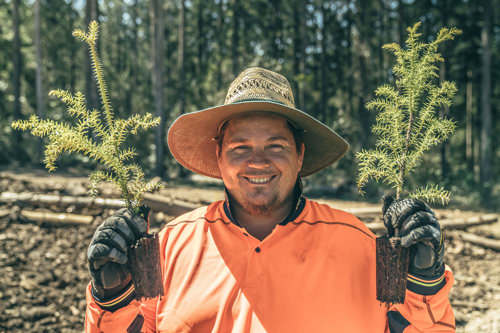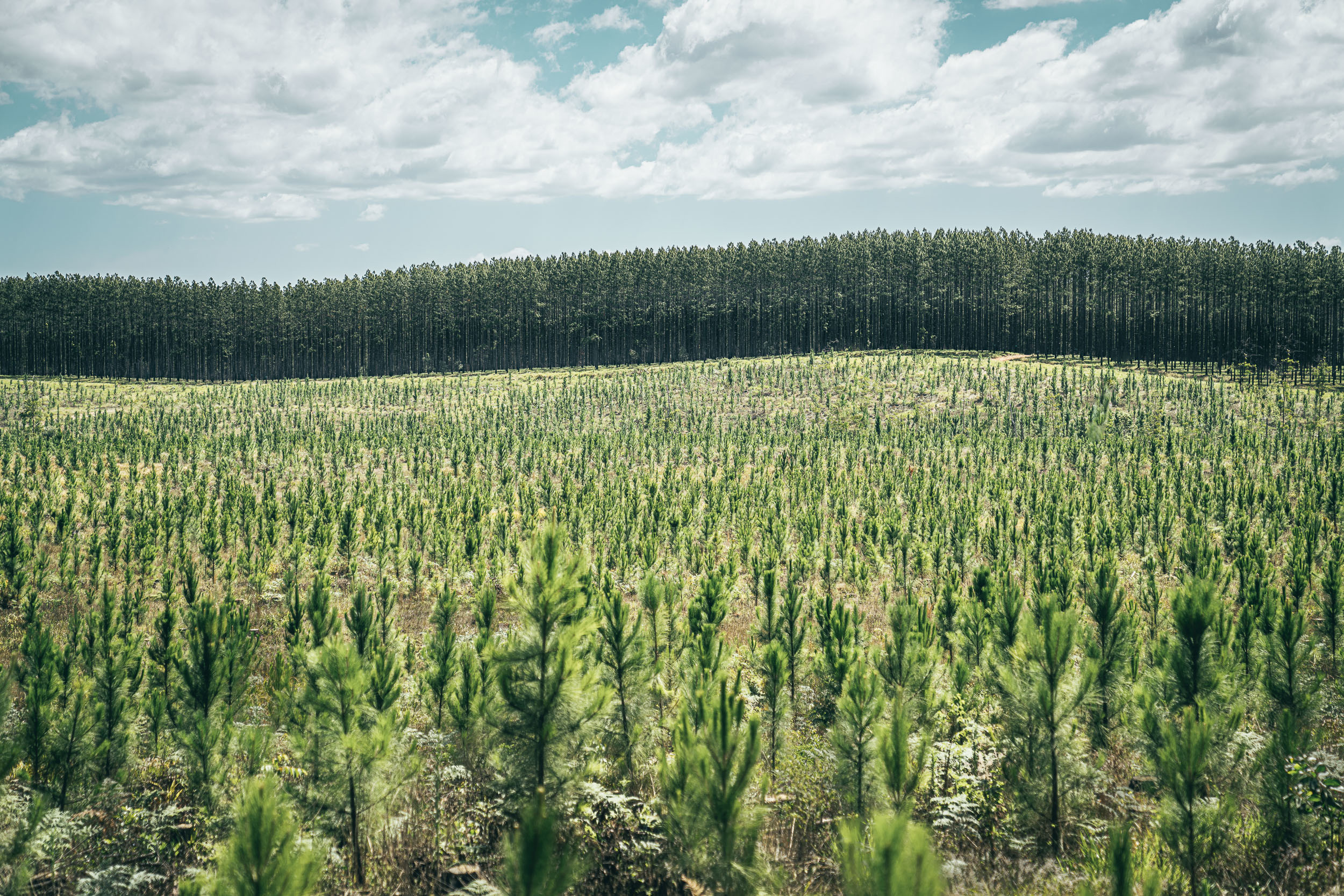It takes many years and a lot of patience to grow a forest
Depending on the species, we nurture and protect our trees for 25 to 50 before harvest delivers the full return on our investment and a myriad of wood products to you.

Fortunately, we’ve been at this for over a century and our silvicultural toolbox is innovative, robust and backed by science.
Silviculture is the science-based practice of managing the establishment, growth, composition and quality of forests for timber production and the protection and enhancement of the native forest buffers that weave throughout our plantations.
Each time a tree is harvested for timber supply, another is planted in its place to ensure our timber production can be continuously sustained. At its core, managing plantation forests this way is good for the environment. The young trees absorb carbon from the atmosphere as they grow and the wood products they are eventually turned into continue to store carbon for up to 100 years.
We plant by hand and I like to think that every tree that goes into the ground is given a little bit of love to help it grow
Our foresters practice precision silviculture, which means that every silvicultural input — cultivation, the number of seedlings planted per hectare, fertilisation, watercourse and erosion management, control of weeds is precisely matched to each site’s unique attributes which include location, soil type and climatic conditions.
Our team of foresters study the land to:
- understand the soil type and what silviculture inputs best suit each site
- ensure our plantations complement and do not disrupt natural drainage lines and water features
- protect and often enhance native forest buffers
- understand the native species that reside in our plantation forest buffers and how we can protect them
- preserve cultural heritage sites and artefacts
- improve soil quality and reduce erosion and sedimentation transfer through carefully thought out plantation design
- minimise chemical inputs required
- maximise plantation productivity and overall timber production.
Our foresters identify and embrace new technologies like drones and LiDAR (Light Detection and Ranging, a remote sensing method that utilises a pulsed laser) to monitor plantation performance and health, understand slope, and identify natural drainage lines and where weed control might be required. Our foresters and contract partners are focused on continuous improvement and innovation to improve our sustainable plantation management.

